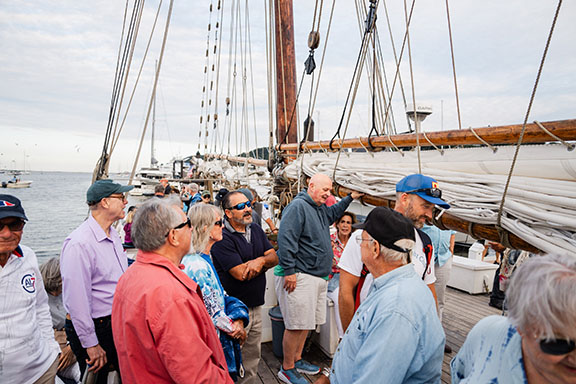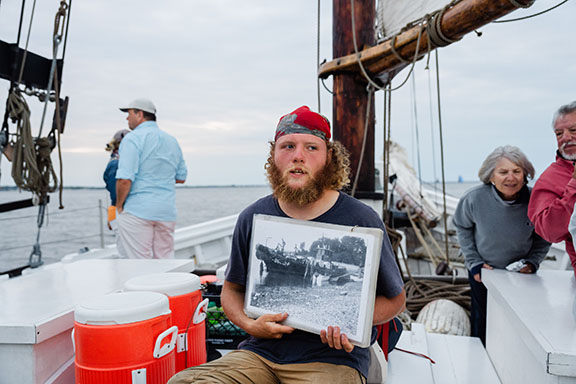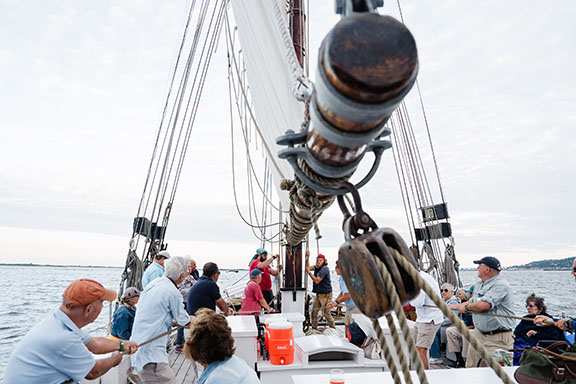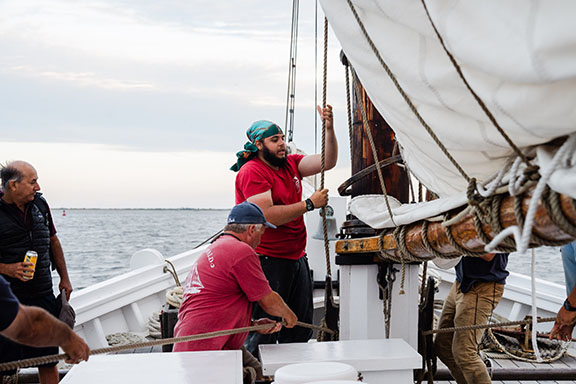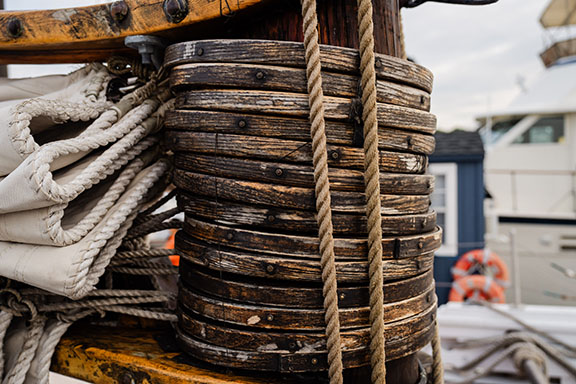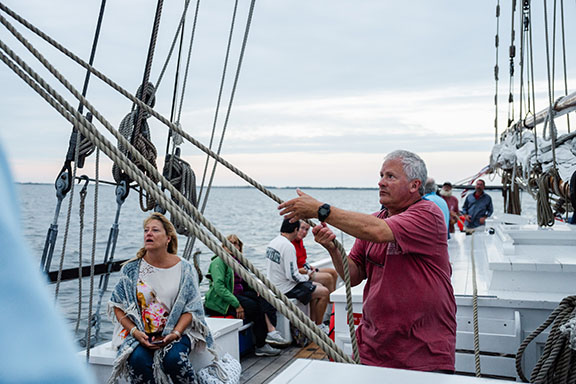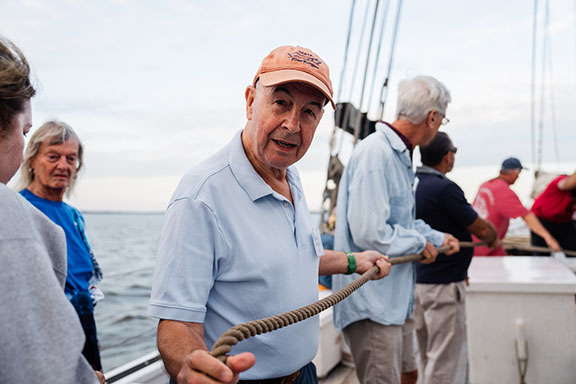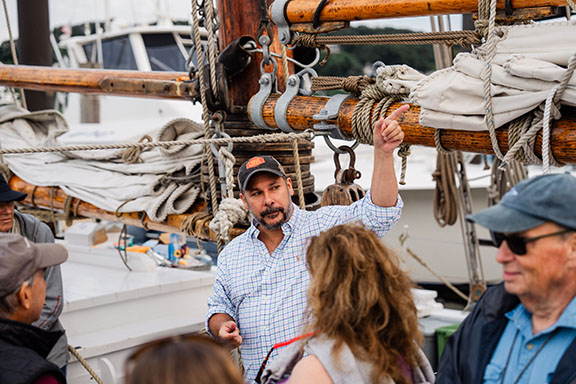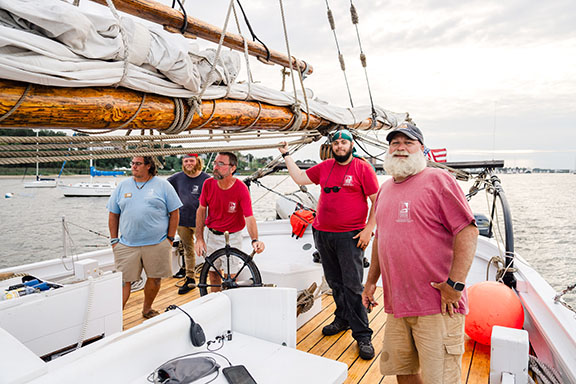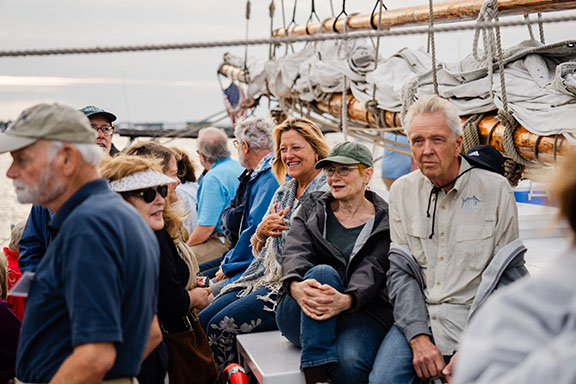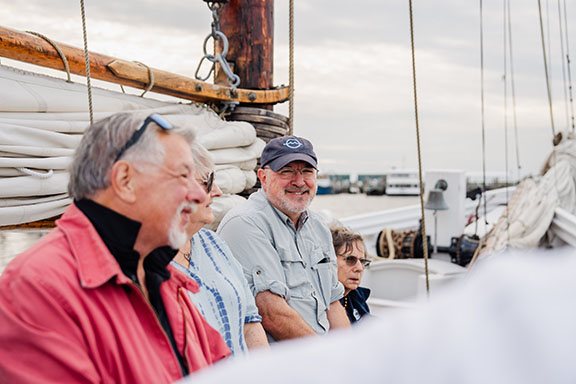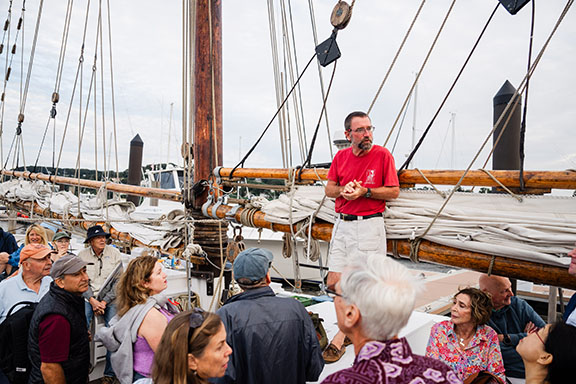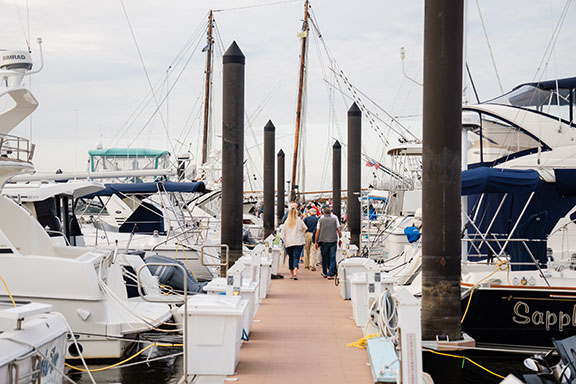The quest for Navesink oysters sails on
Story by Stephen Appezzato | Photos by Patrick Olivero
ATLANTIC HIGHLANDS – The Two River Times joined the Navesink Maritime Heritage Association (NMHA) aboard the historic A.J. Meerwald for a sunset sail on Sandy Hook Bay Aug. 23 to learn about the ship and the history of some of the area’s smallest denizens.
Built in 1928, the A.J. Meerwald is a restored dredging oyster schooner and is the official state tall ship.
The sail “filled up almost immediately,” said Rik van Hemmen, who is president of the NMHA. “It was a beautiful night.”
Aboard the schooner, the group discussed the history of the local oystering industry as well as the importance of oysters in the ecosystem.
The oyster industry in the area boomed until the mid-20th century. Oysters thrived in the Navesink River until the 1990s when MSX and Dermo – two oyster-specific diseases – decimated the local reefs.
“Oysters are a native species for our area. Historically it was a major, major food source. We had massive oyster reefs and they were oystered out and there was disease that came in,” van Hemmen explained. “They pretty much died out in the Navesink and Shrewsbury rivers even though at one stage it was a major oystering ground,” he said.
In the 2000s, NY/NJ Baykeeper, the self-described citizen guardian of the New York and New Jersey harbor estuary, constructed oyster reefs in the Navesink in an effort to restore the population.
“Oysters need reefs to grow, they need to grow in their own shells,” said van Hemmen. “If you want to restore oysters, you need to basically build a new reef.”
However, these reefs were dismantled by the New Jersey Department of Environmental Protection (NJDEP) after the growing concern over illegal harvesting and consuming potentially unsafe shellfish from the then-polluted river.
Van Hemmen explained that state regulations prohibit the construction of new reefs in waters that are not certified for oyster cultivation.
“But, the fact of the matter is, we don’t want to cultivate oysters. We simply want to have oysters in the river,” he said.
Oysters provide a natural “reef-type protection” for local fish and wildlife. There are more than 200 different fish species in the harbor estuary, according to NY/NJ Baykeeper.
Further, oysters naturally filter water – up to 50 gallons a day – according to the Chesapeake Bay Foundation. “They’ll actually increase the clarity of the water,” said van Hemmen.
“On top of that, today, with global warming and rising sea levels, oyster reefs are very effective at reducing shore erosion, too.” Van Hemmen explained how oyster reefs provide a hard cover over sand. “When waves come in, the reefs help maintain the integrity of the sand,” he said.
Partnered with the Monmouth University Urban Coast Institute, NY/NJ Baykeeper and the NMHA continue to lead the charge to restore oyster reefs in local waters. But, according to van Hemmen, “it’s very slow moving.”
The coalition hopes to update the NJDEP’s Shellfish Management Rules to ease restrictions on research installations of oyster reefs. According to NY/NJ Baykeeper attorney Michele Langa, the NJDEP previously proposed an update to its rules which would remove much of the restrictive language for this application, but the update was never adopted. Instead, the NJDEP readopted its incumbent rule as-is.
“We have no input as to why the update was never formally proposed,” Langa wrote in an email to The Two River Times.
The special Aug. 23 event included locally crafted beer provided by Ross Brewery of Port Monmouth and food from Sickles Market.
“It was a very relaxing time to enjoy the water and especially the Meerwald, which has just been restored and is in beautiful shape,” said van Hemmen.
And the push to restore the native oysters trudges on.
This article originally appeared in the August 31 – September 6, 2023 print edition of The Two River Times.


